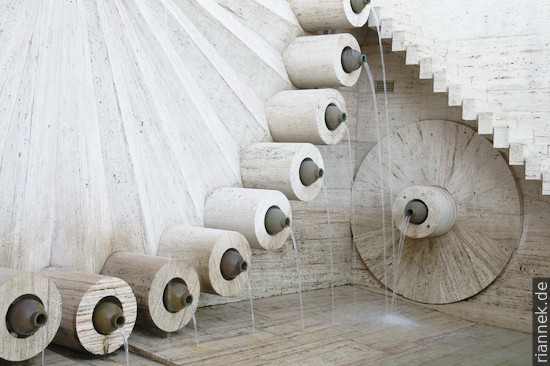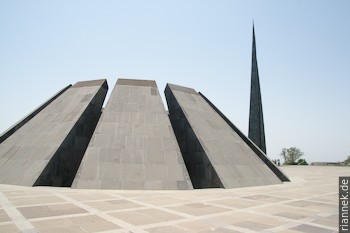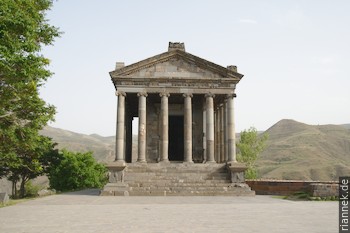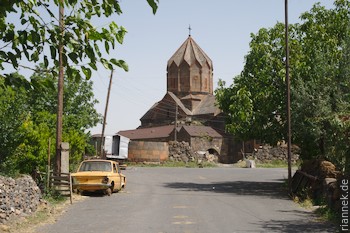
Looking over the capital of Armenia, the Soviet-era blocks spread out before you, grey concrete and pink tufa, in between magnificent palaces of the dictatorship of the proletariat lost in the haze. On clear days, which seem to be rare, the majestic Ararat rises behind them. The image seems so unreal, as if someone had rolled out a huge photo wallpaper back there.
In the squares, every square meter is used by exquisite cafés, beckoning after a visit to the art museums.

At the Genocide Memorial I learn in detail how the Turks wanted to solve the “Armenian question” in World War I by killing 1.5 million people. At that time, Armenians fought on the Russian side because they hoped for independence from the Ottoman Empire. As a result, Armenians were driven en masse into the Syrian desert, where they were attacked if they had not already died of thirst. Others were drowned or shot, often by special units made up of criminals released for the purpose. Germany, which was allied with Turkey, said that this was an internal matter of the Ottoman Empire.

From Yerevan, it is not far to the Hellenistic temple in Garni, which towers spectacularly above a gorge with tall basalt columns. It is a reminder that after the collapse of the Hellenistic empires (and before the rise of Rome), Armenia reached its greatest expansion: as far as Syria. A little way up the gorge from the temple is a particularly beautiful monastery, Geghard. There are several more monasteries in the area, on the edge of gorges, on a hill in front of Ararat (as far as it can be guessed in the haze), etc. I also visit the beautiful cathedral of Echmiatsin, which is the seat of the Armenian Patriarch.

Read on
Backpacking trip Middle East and Caucasus 2008
Tatev and Noravank
Nagorno Karabakh
Haghpat and Sanahin
Basalt columns near Garni, Armenia